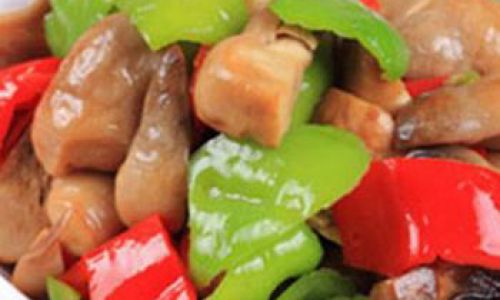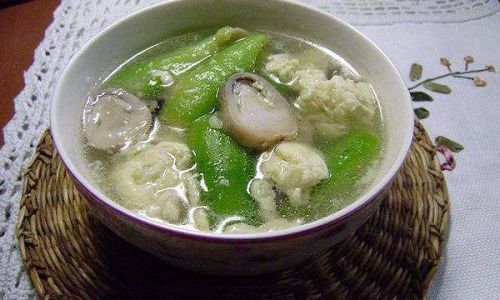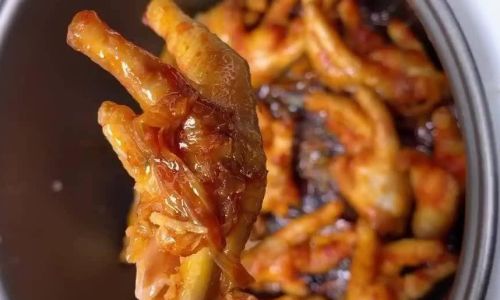Introduction
Straw mushroom soup, a beloved dish in many Asian cuisines, is celebrated for its earthy flavor, tender texture, and comforting warmth. Whether served as a starter or a main course, this soup has a unique ability to elevate any meal with its umami-rich profile. While the recipe may seem straightforward, achieving perfection requires attention to detail, from selecting the freshest ingredients to balancing flavors with precision. This guide will walk you through every step of creating a bowl of straw mushroom soup that tantalizes the taste buds and soothes the soul. We’ll explore ingredient selection, cooking techniques, flavor enhancements, and creative variations to ensure your soup stands out as a culinary masterpiece.

Understanding Straw Mushrooms
Straw mushrooms (Volvariella volvacea) are small, ivory-colored fungi with a distinctively delicate taste and a slightly chewy texture. Native to Southeast Asia, they thrive in tropical climates and are often harvested young, when their caps are still enclosed within a thin, papery veil. Unlike button mushrooms, which have a mild flavor, straw mushrooms boast a deeper, almost nutty undertone that pairs beautifully with broths, herbs, and spices. When cooked, they release a subtle sweetness that forms the backbone of the soup’s flavor profile.
Ingredients: The Foundation of Flavor
To create a memorable straw mushroom soup, start with high-quality ingredients. Here’s a breakdown of what you’ll need:
-
Straw Mushrooms (Fresh or Dried):
- Fresh: Look for firm, unbruised mushrooms with tightly closed caps. Avoid those with slimy surfaces or dark spots.
- Dried: If fresh aren’t available, opt for dried mushrooms. Rehydrate them in warm water for 20 minutes before use.
-
Broth:
- Chicken or Vegetable Broth: For a rich, savory base. Homemade broth is ideal, but store-bought low-sodium varieties work in a pinch.
- Bonus Tip: Roast chicken bones or vegetable scraps before simmering to deepen the broth’s flavor.
-
Aromatics:
- Garlic & Ginger: Mince or grate for a fragrant foundation.
- Shallots or Onions: Add a mild sweetness when caramelized.
-
Protein (Optional):
- Chicken, Tofu, or Shrimp: Enhance the soup’s heartiness. Slice thinly for even cooking.
-
Vegetables:
- Carrots, Celery, or Bell Peppers: Introduce color and crunch.
- Leafy Greens (Spinach or Bok Choy): Add at the end to retain vibrancy.
-
Seasonings:
- Soy Sauce or Fish Sauce: For umami.
- White Pepper: A pinch adds warmth without overwhelming.
- Sesame Oil: A drizzle at the end lends aromatic depth.
-
Garnishes:
- Fresh Cilantro, Scallions, or Fried Shallots: Elevate both flavor and presentation.
Preparation: Step-by-Step Mastery
Cleaning and Prepping the Mushrooms
- Fresh Mushrooms: Gently wipe with a damp cloth to remove dirt. Trim the ends of the stems if tough.
- Dried Mushrooms: After rehydrating, squeeze out excess water and slice if desired.
Sautéing Aromatics
- Heat a neutral oil (like vegetable or canola) in a heavy-bottomed pot over medium heat.
- Add minced garlic, ginger, and shallots. Sauté until golden and fragrant (2–3 minutes). Avoid burning, as this imparts bitterness.
Building the Broth
- Pour in the broth and bring to a simmer. Add sliced carrots and celery, if using.
- Pro Tip: For a clearer broth, skim off any foam that rises to the surface.
Introducing the Mushrooms
- Add the straw mushrooms to the pot. Simmer gently for 10–15 minutes to meld flavors.
- Key Insight: Overcooking mushrooms can make them rubbery. Test for tenderness with a fork.
Adding Protein and Vegetables
- If using chicken or tofu, add now and simmer until cooked through (5–7 minutes).
- Stir in leafy greens just before serving to wilt them slightly.
Seasoning to Perfection
- Taste and adjust seasonings with soy sauce, white pepper, and a pinch of sugar if needed.
- Secret Weapon: A splash of lime juice or rice vinegar brightens the broth.
Finishing Touches
- Drizzle with sesame oil and top with garnishes. Serve hot with a side of steamed rice or noodles.
Enhancing Flavor: Expert Techniques
Roasting Mushrooms for Depth
- Toss straw mushrooms in oil and roast at 400°F (200°C) until golden. Add to the soup for a smoky, caramelized edge.
Umami Bomb

- Stir in a teaspoon of miso paste or a splash of oyster sauce during the final minutes of cooking.
Herbal Infusion
- Tie a bundle of fresh herbs (cilantro stems, lemongrass, or Thai basil) with twine and simmer in the broth. Remove before serving.
Creamy Twist
- For a velvety texture, blend a portion of the soup with coconut milk or heavy cream, then stir back into the pot.
Spicy Kick
- Add fresh chili peppers, chili flakes, or a dollop of sriracha for heat. Balance with a squeeze of lime.
Variations to Suit Every Palate
Vegetarian Delight
- Swap chicken broth for vegetable broth and use tofu as the protein. Add cubed sweet potatoes or mushrooms for heft.
Coconut Curry Version
- Sauté curry paste with aromatics, then add coconut milk and straw mushrooms. Serve with lime wedges and cilantro.
Noodle Soup (Guay Tiew)
- Cook rice noodles separately, then ladle the soup over them. Top with bean sprouts, lime, and crushed peanuts.
Hearty Meat Lover’s Soup
- Brown ground pork or beef before sautéing aromatics. Add diced tomatoes for acidity.
Serving Suggestions: Elevating the Experience
- Pair with crispy spring rolls or dumplings for a complete meal.
- Serve in hollowed-out bread bowls for a rustic touch.
- Accompany with a side of jasmine rice or quinoa to soak up the broth.
Health Benefits: Nutrition Meets Nourishment
Straw mushrooms are low in calories and rich in essential nutrients:
- Antioxidants: Combat oxidative stress.
- B Vitamins: Support energy metabolism.
- Fiber: Aid digestion and promote satiety.
- Minerals: Copper, potassium, and selenium for immune function.
Common Mistakes and How to Avoid Them
-
Overcooking Mushrooms:
- Solution: Simmer mushrooms until just tender to preserve their texture.
-
Using Weak Broth:
- Solution: Opt for homemade broth or enhance store-bought versions with aromatics.
-
Underseasoning:
- Solution: Taste and adjust seasonings progressively. Remember that saltiness intensifies as the soup reduces.
-
Overcrowding the Pot:
- Solution: Cook in batches if needed to ensure even heating.
-
Skipping Garnishes:
- Solution: Fresh herbs and a drizzle of oil add visual appeal and freshness.
Storage and Reheating: Making It Last
- Refrigerate: Cool completely, then store in airtight containers for up to 3 days.
- Freeze: Transfer to freezer-safe bags (flatten for easy thawing) and use within 2 months.
- Reheat: Gently warm on the stove, adding a splash of broth if needed to restore consistency.
Conclusion: The Joy of Craftsmanship
Straw mushroom soup is more than a dish—it’s a canvas for creativity and a testament to the joy of cooking. By mastering the balance of flavors, textures, and aromas, you can transform simple ingredients into a bowl of pure comfort. Whether you prefer it traditional or adventurous, this soup invites experimentation. So gather your ingredients, embrace the process, and savor the satisfaction of creating a meal that nourishes both body and soul.
Final Thought
The next time you crave a dish that whispers of home-cooked warmth, remember this guide. With practice, your straw mushroom soup will become a cherished recipe, perfected over time and shared with those you hold dear. Bon appétit!






0 comments